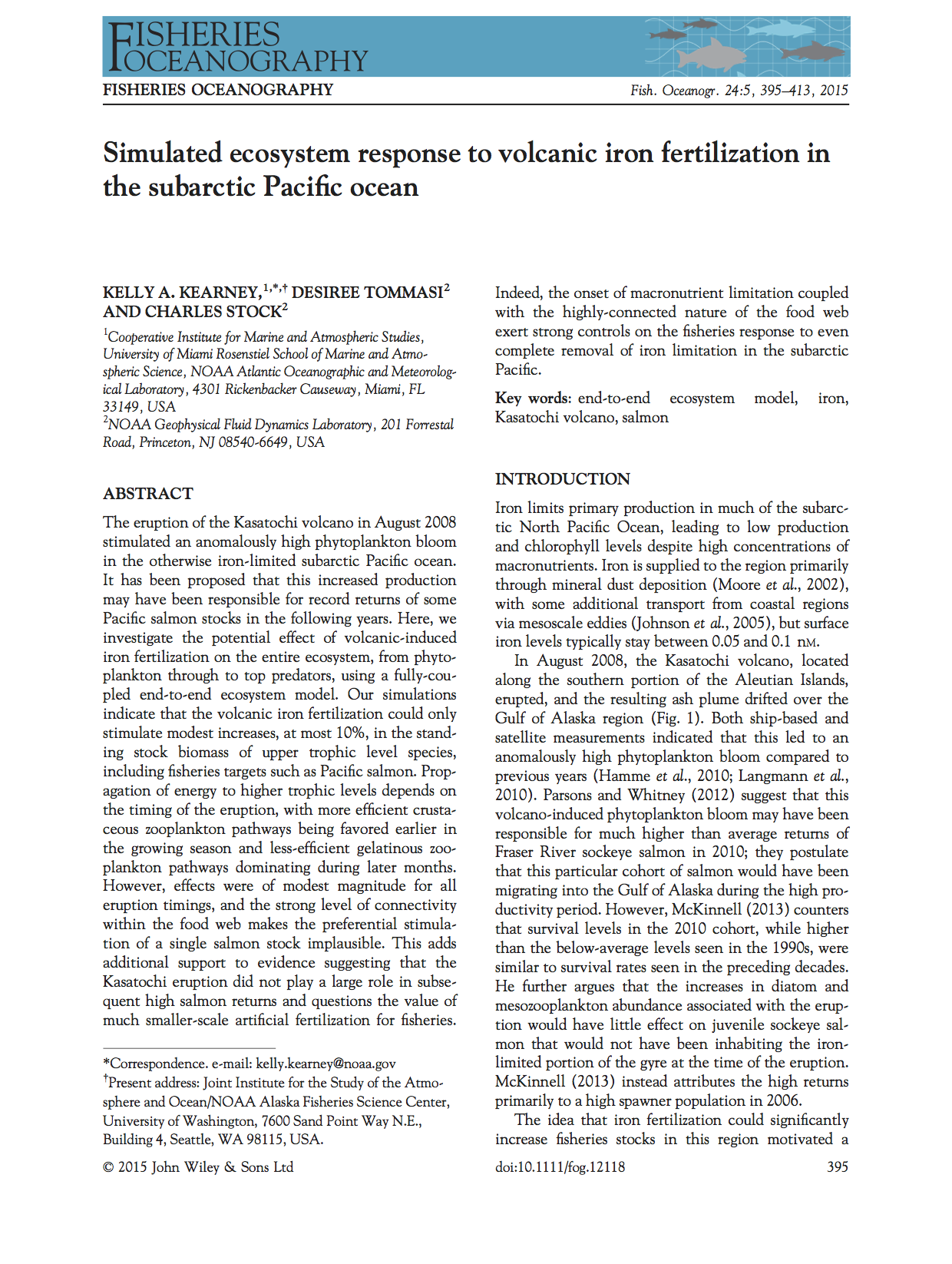Simulated ecosystem response to volcanic iron fertilization in the subarctic Pacific ocean
Kearney, Kelly A. and Tommasi, Desiree and Stock, Charles
The eruption of the Kasatochi volcano in August 2008 stimulated an anomalously high phytoplankton bloom in the otherwise iron-limited subarctic Pacific ocean. It has been proposed that this increased production may have been responsible for record returns of some Pacific salmon stocks in the following years. Here, we investigate the potential effect of volcanic-induced iron fertilization on the entire ecosystem, from phytoplankton through to top predators, using a fully-coupled end-to-end ecosystem model. Our simulations indicate that the volcanic iron fertilization could only stimulate modest increases, at most 10%, in the standing stock biomass of upper trophic level species, including fisheries targets such as Pacific salmon. Propagation of energy to higher trophic levels depends on the timing of the eruption, with more efficient crustaceous zooplankton pathways being favored earlier in the growing season and less-efficient gelatinous zooplankton pathways dominating during later months. However, effects were of modest magnitude for all eruption timings, and the strong level of connectivity within the food web makes the preferential stimulation of a single salmon stock implausible. This adds additional support to evidence suggesting that the Kasatochi eruption did not play a large role in subsequent high salmon returns and questions the value of much smaller-scale artificial fertilization for fisheries. Indeed, the onset of macronutrient limitation coupled with the highly-connected nature of the food web exert strong controls on the fisheries response to even complete removal of iron limitation in the subarctic Pacific.
